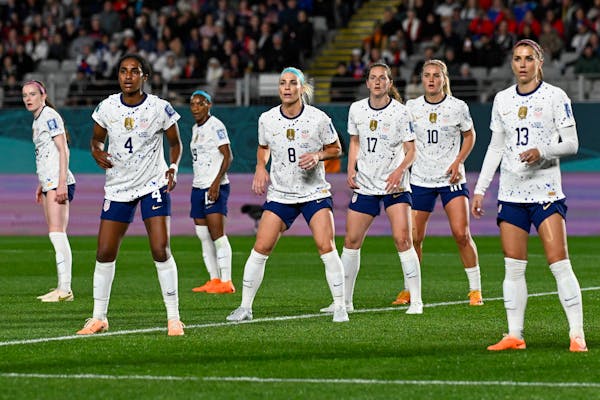In September 2019, the U.S. Women's National Team came to Allianz Field in St. Paul for the first time. It was part of a "Victory Tour," following its World Cup title that summer — a way to both celebrate the team and make some money for the players.
The chosen opponent was Portugal. In 2019, there was no better example of a country that had invested in men's soccer, but failed to do the same on the women's side, than Portugal.
The Americans outshot the Portuguese 21-1 in a 3-0 victory, and the most memorable thing about the match was that Portugal could barely get out of its own half — nor did the team really try.
It's been almost four years since that game, and in the intervening four years, Portugal has done some catching up — as exemplified by Tuesday's 0-0 draw between the teams in New Zealand, in which Portugal was the width of the post away from knocking the U.S. out of the World Cup in the group stage for the first time.
In 2019 in St. Paul, the U.S. had 60% of the possession and completed 500 passes. This time around, Portugal won the possession battle, and completed exactly 100 more passes than the U.S. did.
That sets the stage for early Sunday morning in the round of 16 (4 a.m. Minnesota time on FOX). The U.S. has to take on Sweden, a team that the Americans have struggled with over the past decade — including a shocking 3-0 loss at the Tokyo Olympics in 2021. This will be the sixth straight World Cup that the U.S. has played Sweden, and the last three have ended with one win apiece and one draw.
It's worth remembering that the USWNT, for all its success, has never been accused of being the most tactically advanced team. Former coach Jill Ellis won the World Cup twice, and yet spent most of her tenure defending herself from criticism of her game management.
Her teams never seemed to have their best 11 players on the field, or have those players in their best spots, and they certainly weren't out there with cutting-edge game plans or clever ways of attacking the game.
Instead, they counted on their individual quality and their winning mentality to carry them through, and it was enough. In the 2019 World Cup knockout rounds, the U.S. was probably outplayed by both France and England, and only skated through against Spain in the round of 16 on the strength of two penalty kicks.
But the U.S. went through, because Spain had never been there before, and England missed a crucial penalty in the semifinal, and France is France.
That gap in player-against-player quality has eroded, though, and mentality can only carry a team so far. The Netherlands and Portugal had better tactical plans than the U.S. during group stage draws.
The Americans seem to have no plan, except for "absolutely nobody will play in midfield, we'll give the ball to Sophia Smith as often as possible, and she can try to beat five defenders and score. Also maybe Lindsey Horan will get angry, and smash in a corner."
The USWNT has never finished worse than third place at the World Cup. Individual brilliance and confidence have always been enough for the United States, and that's what the team is counting on again. It will be a battle just to make the semifinals; even if the U.S. beats its old nemesis Sweden, either Japan or Norway will be waiting in the quarterfinals.
If it doesn't work, this could be the end of an era for the U.S. women's national team. It's been decades since American youth national teams have been dominant, but — in part thanks to the NWSL, the deepest women's soccer league in the world — the U.S. has always been able to accelerate at the senior level.
But the rest of the world is closing that gap on every front: youth development, support for women's national teams and even with the quality of club leagues.
If the old U.S. mentality isn't enough, we might not remember 2023 as the year the rest of the soccer world caught up with the USWNT. We might remember it as the year that the United States officially fell behind.
LeBron scores 30, and the Lakers avoid 1st-round elimination with a 119-108 win over champion Denver
Wyatt Johnston scores in OT, Stars beat Golden Knights 3-2 to cut series deficit to 2-1

